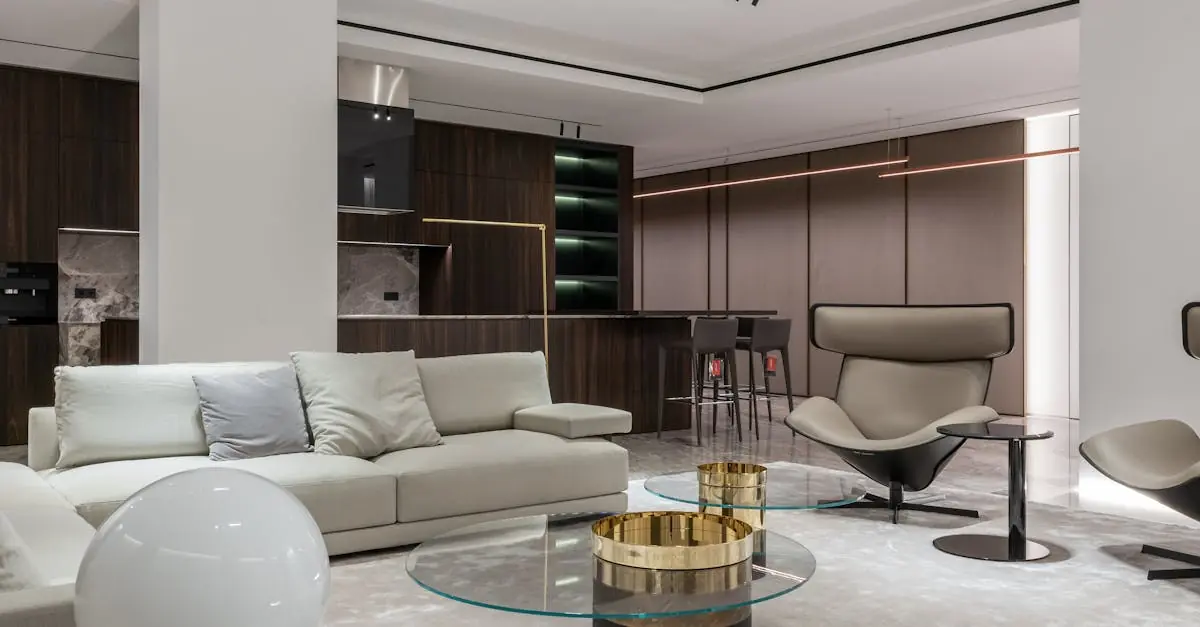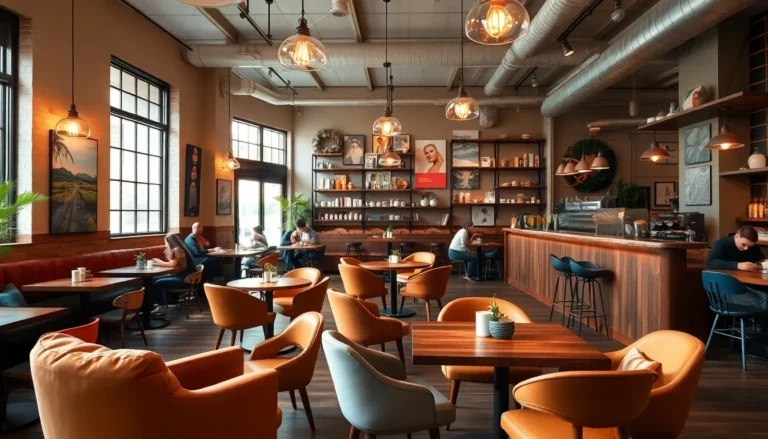Table of Contents
ToggleIn the world of interior design, small rooms can feel like a puzzle waiting to be solved. But with a little creativity and the right zoning techniques, they can transform from cramped quarters into functional, stylish spaces. Imagine turning that tiny bedroom into a cozy reading nook or that awkward corner of the living room into a mini-office. It’s not just about fitting furniture; it’s about crafting experiences.
Understanding Zoning Small Rooms
Zoning small rooms involves creating distinct areas within a limited space. This technique maximizes functionality while enhancing style.
Definition of Zoning
Zoning refers to the practice of dividing a room into separate sections for specific purposes. Designers utilize furniture placement, rugs, or color schemes to define these areas. By using visual cues, they establish boundaries that guide movement and interaction. For example, a sofa can delineate the living space from a dining area. This approach allows for individual functions without the need for physical walls. Zoning simplifies layouts, making small rooms feel organized and purposeful.
Importance of Zoning in Interior Design
Zoning plays a vital role in the overall effectiveness of interior design. It helps to create a sense of order in small rooms, enhancing the user experience. Individual zones enable optimal space utilization, promoting different activities like relaxation or work. By implementing zoning, designers can infuse personality into small areas. Each section can showcase distinct styles or themes while harmonizing with the overall design. Effective zoning can alleviate feelings of clutter, resulting in a more inviting atmosphere.
Benefits of Zoning Small Rooms
Zoning small rooms provides numerous advantages, significantly improving both functionality and aesthetics. By distinguishing spaces effectively, individuals can create cohesive environments that serve multiple purposes.
Enhancing Functionality
Zoning enhances functionality by allowing distinct areas for various activities. Allocating space for work, relaxation, or dining makes it easier to organize daily routines. For instance, a corner designated for an office can boost productivity by separating work from leisure. Following zoning principles, layered layouts and focused lighting enhance usability and define purpose. Incorporating designated areas ensures smoother transitions between activities while maximizing every square foot.
Improving Aesthetics
Improved aesthetics arise from effective zoning strategies combined with thoughtful design elements. Color schemes and patterns establish boundaries that visually separate activities. Creating distinct zones with rugs, furniture placement, or wall colors enhances the overall appeal. Style emerges through layering textures and combining materials, resulting in visually engaging environments. The increased visual interest draws attention and elevates the design without overcrowding the space, allowing personal style to flourish in small rooms.
Techniques for Zoning Small Rooms
Zoning small rooms involves clever strategies to enhance usability and style. Effective techniques include furniture arrangement and color schemes.
Furniture Arrangement
Arranging furniture strategically significantly influences the perception of space. Placing larger pieces against walls maximizes open areas and creates a sense of flow. Use multi-functional furniture, like a sofa bed or a coffee table with storage, to maximize utility while minimizing clutter. Designate specific areas, such as a reading nook with a comfortable chair and a lamp, to establish clear zones for activities. Consider traffic patterns; ensure pathways remain unobstructed to enhance movement. Group furniture around a focal point, such as a television or artwork, to create cohesion within the designated areas.
Color Schemes
Color schemes play a crucial role in visually delineating spaces. Light colors tend to open up areas, making them feel larger and more inviting. Contrasting hues can effectively define different zones; for instance, a vibrant accent wall can highlight a workspace or relaxation area. Using varying shades within the same color family creates harmony while maintaining distinctiveness in spaces. Incorporate paint, wallpaper, or textiles to introduce patterns or textures that suggest borders between functions. Consistency in color choices across zones fosters a unified aesthetic, ensuring small rooms look intentional and well planned.
Creative Ideas for Zoning Small Rooms
Zoning small rooms enhances functionality and visual appeal. Here are several creative strategies to consider.
Use of Area Rugs
Area rugs serve multiple purposes in small spaces. They establish distinct zones by visually separating areas like the living room and dining area. Utilizing rugs with different textures or patterns can enhance the atmosphere of each zone, adding depth and interest. For example, a plush rug can define a cozy reading nook, while a more durable rug suits a high-traffic area. Colors can also play a vital role; coordinating shades across the room creates a cohesive look. Ultimately, strategically placing rugs simplifies navigation and enhances comfort.
Incorporating Dividers
Dividers provide flexibility in layout and design. Using bookcases, folding screens, or curtains can create privacy and separation without permanent changes. A well-placed bookcase can serve as a stylish partition while offering storage and display space. When selecting dividers, consider materials that enhance style; glass partitions allow light flow, while solid dividers offer blockades. Implementing this technique not only aids in zoning but adds character to the decor. Creativity in choosing dividers encourages unique arrangements within the limitations of small spaces.
Zoning small rooms can transform even the most cramped spaces into functional and stylish havens. By creatively defining areas for specific activities, individuals can maximize the potential of their environments. The thoughtful use of furniture placement, color schemes, and decorative elements not only enhances organization but also adds personal flair.
Embracing zoning techniques invites a sense of order and purpose, allowing for seamless transitions between different activities. Whether it’s carving out a cozy reading nook or a productive workspace, these strategies foster inviting atmospheres that reflect individual tastes. Ultimately, zoning is key to making small rooms feel more expansive and enjoyable.




